HVAC technicians or contractors are well-trained professionals who are experts in everything HVAC. They are well versed in every component inside the HVAC system. Besides, for HVAC repair or maintenance tasks, they follow the proper guidelines and handle the HVAC unit very cautiously. But should you consider hiring an HVAC contractor or do DIY for Read more
IAQ
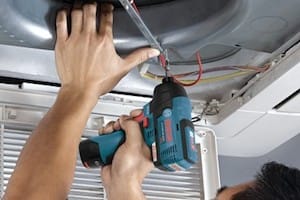
HVAC technicians or contractors are well-trained professionals who are experts in everything HVAC. They are well versed in every component inside the HVAC system. Besides, for HVAC repair or maintenance tasks, they follow the proper guidelines and handle the HVAC unit very cautiously.
But should you consider hiring an HVAC contractor or do DIY for HVAC repairs?
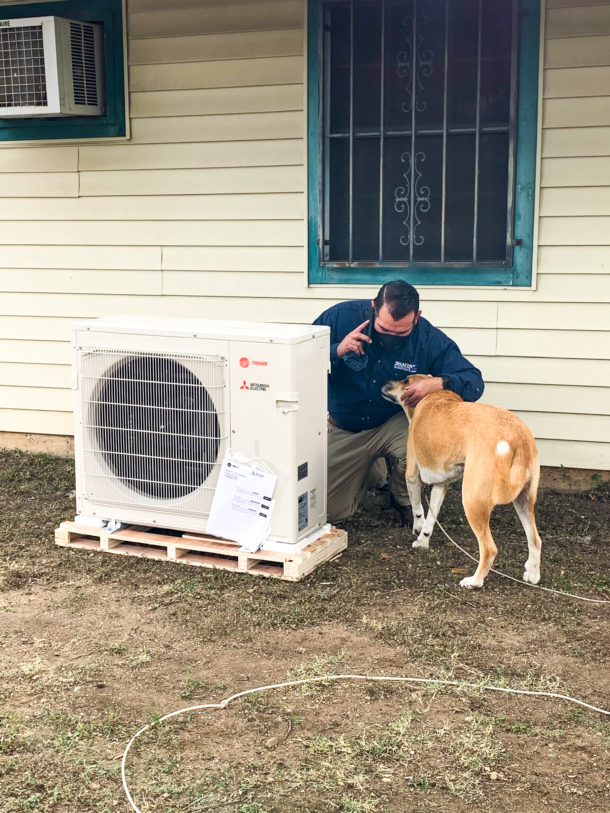
1. Follows Strict Protocols During HVAC Cleaning
HVAC systems are complicated and need to be handled cautiously. When you hire a novice HVAC technician or handyman who doesn’t have enough experience handling an HVAC unit, he will likely damage the HVAC system. On the flip side, when you hire an expert HVAC contractor, he strictly follows the HVAC cleaning protocols.
For example, for cleaning the outside AC unit, an experienced HVAC contractor will first disconnect the cooling system. Then if there is debris in the cooling unit, he will clean them. After that, he will clean the AC fins and coils. When the HVAC contractor cleans the AC fins and coils, he will straighten the AC fins and level the HVAC unit. Similarly, there are protocols for cleaning the parts inside the AC unit.
When the protocols are followed strictly, there is zero risk of damaging your HVAC unit. But a person who doesn’t have experience in handling HVAC systems doesn’t know this HVAC cleaning protocol. As a result, if that person tries to clean the HVAC system, it can cause severe damage to the HVAC system. This is why for HVAC cleaning, you should never DIY. Instead, it is advised to hire an HVAC contractor to clean the unit.
2. Fast & Reliable HVAC Service
HVAC contractors are well versed in the HVAC unit. They undergo extensive training, and most professional HVAC contractors have an HVAC license. Having an HVAC license indicates that you know the ins and out of an HVAC unit and can handle any type of issue. Besides, an HVAC contractor has all the necessary tools to repair an AC or furnace.
On the flip side, when you hire a regular repairman, they don’t have the required tool to handle the HVAC unit. As a result, at first, they will have to collect all the required tools and start working later. But this will take a lot of time and make the HVAC repair or maintenance process less efficient.
This is why if you want efficient, quick, and reliable HVAC service, you must call an HVAC contractor or technician.
3. Helps Increase HVAC Efficiency
Over time, HVAC units start to lose their efficiency and have wear and tear. But HVAC efficiency can be increased by regular maintenance. Here, an HVAC contractor will help you out.
A professional HVAC contractor knows which type of repair to do to keep the HVAC system efficiency at an optimum level. On the other hand, a regular repairman won’t know what to do to increase efficiency. As a result, he will suggest random AC or furnace repairs. But these repairs are of no use. That is why for the correct type of HVAC service, you must hire a professional HVAC technician or contractor.
4. Does Home Evaluation
When using an HVAC unit, you will have to factor in your home’s condition and size. Without proper home evaluation, you will have issues such as hot and cold spots, inefficient cooling, high energy bills, etc. However, you can avoid these issues by hiring an HVAC contractor.
An HVAC contractor not only looks after the HVAC system but also evaluates your home’s condition. For example, if you are planning to purchase a new air conditioning unit, you will first have to consider the size of the room. Because if you purchase an AC with less or more capacity than the actual demand, you won’t get the desired comfort.
Besides, ventilation plays a key role in keeping your house comfortable, and without proper home evaluation, correct ventilation design is not possible.
Measuring the room size, ventilation design, calculating the HVAC capacity, etc., may sound a bit complicated. But when you hire an HVAC contractor, he will do all these and provide you with the best HVAC solution.
5. HVAC Insurance
Mistakes can happen during a repair, and if the component isn’t covered by insurance, you will have to pay from your own pocket. But when you hire an HVAC contractor, you won’t have to worry about it at all because most HVAC contractors have HVAC insurance coverage. As a result, if there is a need for additional repairs, HVAC insurance will cover those costs. But when you hire a handyman, they usually don’t have such HVAC insurance. Thus, if it requires additional repairs, you will have to pay for it.
Conclusion
For HVAC cleaning or regular maintenance, always call an HVAC contractor. Besides, when it comes to an HVAC unit, you should never rely on DIY methods. Because sometimes, DIY ways are not effective and cause more harm than good to the HVAC system.
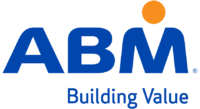
In March, the Biden Administration launched its Clean Air in Buildings Challenge—an integral piece of the National COVID-19 Preparedness Plan released by the Administration earlier in March, to encourage building owners, schools, colleges and universities, building operators, and organizations to implement practices and strategies that improve indoor air quality (IAQ) and diminish the spread of COVID-19. ABM Read more
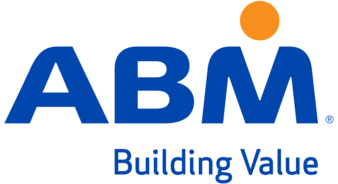 In March, the Biden Administration launched its Clean Air in Buildings Challenge—an integral piece of the National COVID-19 Preparedness Plan released by the Administration earlier in March, to encourage building owners, schools, colleges and universities, building operators, and organizations to implement practices and strategies that improve indoor air quality (IAQ) and diminish the spread of COVID-19. ABM, a leading provider of integrated facility solutions, today announces its enthusiastic support of the new “Clean Air in Buildings Challenge” and continues its commitment to safeguard the places and spaces people occupy every day.
In March, the Biden Administration launched its Clean Air in Buildings Challenge—an integral piece of the National COVID-19 Preparedness Plan released by the Administration earlier in March, to encourage building owners, schools, colleges and universities, building operators, and organizations to implement practices and strategies that improve indoor air quality (IAQ) and diminish the spread of COVID-19. ABM, a leading provider of integrated facility solutions, today announces its enthusiastic support of the new “Clean Air in Buildings Challenge” and continues its commitment to safeguard the places and spaces people occupy every day.
To prepare building owners and operators for the challenge of improving indoor air quality, the Environmental Protection Agency (EPA), in partnership with the Department of Energy (DOE), Centers for Disease Control and Prevention (CDC), and other federal agencies, provided a guide that details the four components of recommendations that include: creating a clean indoor air action plan, optimizing fresh air ventilation, enhancing air filtration and cleaning, and engaging the building community.
Josh Feinberg, Chief Strategy Officer stated, “At ABM, we applaud this action dedicated toward advancing the adoption of crucial indoor air quality guidelines. As we continue to navigate the uncertainty of COVID-19, it’s imperative that effective strategies are implemented to better equip organizational leaders to reduce the spread of the virus, thereby creating healthier spaces for all.”
Since the beginning of the year, states have been steadily removing mask mandates, re-opening facilities at full capacity, and no longer requiring proof of vaccination. As these protective protocols deescalate, there is an opportunity to apply key learnings and improve the health of the air within facilities. The Clean Air in Buildings Challenge, along with efficient standards of enhanced cleaning practices, provide a roadmap for building owners and operators to support the slowing the spread of COVID-19 variants and providing a better overall indoor environment.
Aligning with this objective, ABM continues to execute multipronged integrated facility service solutions for business decision makers and building owners and operators to deploy a holistic approach to facility health.
“Keeping occupants safe through incorporating proper ventilation, mechanical and control systems, along with several new and advanced technologies for biohazard disinfection of the air is critically important. The COVID-19 pandemic thrust a spotlight on the essential responsibility of companies to address the wellbeing of people, and businesses across industries must prioritize improvements to their facilities to achieve proper risk assessment in real-time,” said Nancy M. McClellan, ABM Expert Advisory Council.
Congress, along with the Biden Administration, has allocated hundreds of billions of dollars towards infrastructure investment, including for schools, public buildings, and other facilities to improve indoor air quality by funding upgrades and enhancements to Heating, Ventilation, Filtration, and Air Conditioning (HVAC) systems. ABM is an industry leader in providing EnhancedFacility™ services focused on improving IAQ to foster better occupant wellbeing through improved building health, safety, and efficiency that helps reduce viral transmission.
Please visit abm.com to learn more about ABM’s EnhancedFacility program and services.
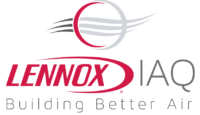
New program empowers HVAC service leaders to implement advanced IAQ solutions for commercial facilities across the nation Lennox International, a global leader in the heating, air conditioning, and refrigeration markets, has announced additional training that will provide contractors with the proper knowledge to help improve indoor air quality (IAQ) through their Building Better Air initiative Read more
New program empowers HVAC service leaders to implement advanced IAQ solutions for commercial facilities across the nation
Lennox International, a global leader in the heating, air conditioning, and refrigeration markets, has announced additional training that will provide contractors with the proper knowledge to help improve indoor air quality (IAQ) through their Building Better Air initiative.
The Building Better Air training program provides a structure to improve indoor air quality of commercial spaces through the Evaluate, Solve, Maintain framework. Contractors trained through the program will have key information to explain how HVAC systems impact IAQ and offer the right solutions for their clients.
“Contractors are seeing an increased demand for IAQ solutions recently with the second wave of COVID-19,” said Elliot Zimmer, president and Chief Operating Officer of Lennox Commercial. “Our training program will help provide contractors with the support system they need to assess equipment and make a proper recommendation to better improve IAQ for their customers’ facilities.
“Our strong partnership with our Lennox Commercial Alliance Contractor network gives us a unique ability to help buildings improve their indoor air quality and get back to business safely.”
In October, Lennox introduced the Building Better Air initiative, which helps facilities evaluate the state of their HVAC systems by using an IAQ survey and creates solutions tailored to the needs of the building. The training program is an additional step to further Lennox’s goal to create safe working environments for restaurants, movie theaters, schools, offices and similar facilities.
“Our goal is to help businesses return to a normal routine safely, and improved indoor air quality is a great start,” said Bobby DiFulgentiz, vice president of product management and marketing. “If COVID-19 has taught us anything, it has shown just how important HVAC is in our everyday life. We are focusing our efforts on spreading the knowledge we have on air purification, ventilation, and humidity control so that our customers have access to the right solutions to safely return to business.”
For more information about the Building Better Air initiative or to find a qualified contractor in your area, visit www.lennoxcommercial.com/buildingbetterair.
Dallas—With news of the coronavirus’ airborne droplets being able to be neutralized via advanced filtration, Baker Brothers Plumbing, Air & Electric is responding by affording Dallas-Fort Worth homeowners state-of-the-art HVAC testing and Next-Gen products to combat the pandemic. As the virus re-surges throughout Texas and parts of America, infectious disease experts are learning that COVID-19 can be contracted by inhaling tiny Read more
Dallas—With news of the coronavirus’ airborne droplets being able to be neutralized via advanced filtration, Baker Brothers Plumbing, Air & Electric is responding by affording Dallas-Fort Worth homeowners state-of-the-art HVAC testing and Next-Gen products to combat the pandemic.
As the virus re-surges throughout Texas and parts of America, infectious disease experts are learning that COVID-19 can be contracted by inhaling tiny, invisible particles that hang in stagnant air for hours. A recent investigation by ABC’s Good Morning America revealed that a combination of HEPA (High-Efficiency Particulate Air) filters and UV light are homeowners’ best defense against the virus droplets.
New York Gov. Andrew Cuomo said recently that large malls should be required to install HEPA systems before re-opening. Delta Airlines is also equipping its fleet of aircraft with HEPA filters, while American Airlines said its planes have been using the systems since the 1990s.
The licensed HVAC professionals at Baker Brothers can inspect current systems and suggest a solution from their extensive line of HEPA and UV products.
“Obviously cleaning surfaces is still important but cleaning the air that recirculates through homes and buildings is now a huge focus,” industrial hygiene specialist Nancy McClellan told GMA.
HEPA systems – when properly installed by Baker Brothers technicians – can remove 99.7% of particles as small as .3 microns.
Says Dr. Rajat Mittal, a professor studying the dynamics of COVID-19 particles, “That is potentially good news, because almost all the droplets that are going to be carrying viruses are all within that range.”
With COVID-19 finding new ways to harm Metroplex residents, Baker Brothers is ready to help homeowners protect the health and safety of their family by installing the best defense available.
“We’re certainly seeing a rise in the demand for increased safety measures in DFW homes,” says Baker Brothers president Jimmie Dale. “Our commitment is to meet those needs, while keeping both our customers and employees safe during this trying time. We’re honored to provide the best home defenses available for our DFW family.”

Show Management today announced the winners of the 2019 AHR Expo Innovation Awards competition. Each year, products in 10 different categories are recognized for being some of the HVACR industry’s most innovative products, systems and technologies. Winners will be featured at the Show in Atlanta in January 2019. Winners were selected by a panel of Read more
 Show Management today announced the winners of the 2019 AHR Expo Innovation Awards competition. Each year, products in 10 different categories are recognized for being some of the HVACR industry’s most innovative products, systems and technologies. Winners will be featured at the Show in Atlanta in January 2019.
Show Management today announced the winners of the 2019 AHR Expo Innovation Awards competition. Each year, products in 10 different categories are recognized for being some of the HVACR industry’s most innovative products, systems and technologies. Winners will be featured at the Show in Atlanta in January 2019.
Winners were selected by a panel of third-party ASHRAE member judges who evaluated each award entry based on its innovative design, creativity, application, value and market impact. Winners from each award category will be formally recognized during the 2019 AHR Expo, Jan. 14–16 at the Georgia World Congress in Atlanta. The ceremony is open to all Show attendees and is slated for January 15 at 1:00 PM EST. The AHR Expo will also announce this year’s winner of the highly-anticipated Product of the Year Award at the ceremony.
“Every year we look forward to award submissions that set the bar for innovation and professional practices in HVACR,” said Clay Stevens, manager of AHR Expo. “Year after year we continue to receive entries that exceed our expectations. We congratulate these winners as leaders from across all facets of the industry and look forward to seeing these inventive solutions at the 2019 AHR Expo and in real-world practice.”
Winners and finalists selected within the categories of building automation, cooling, green building, heating, indoor air quality, plumbing, refrigeration, software, tools and instruments, and ventilation are:
BUILDING AUTOMATION
Winner: Automated Logic Corporation (Booth C5731)
Innovation: OptiFlex™ virtual integrator is a software-based integration platform for data monitoring across diverse building systems. OptiFlex™ provides scalable integration solutions ideal for large integration projects such as data centers, hospitals and college campuses. The virtual integrator supports up to 50,000 data points from a single computing point, eliminating the need for multiple hardware gateways, which often require costly materials and labor, and have installation limitations due to space constraints in most mechanical rooms. It supports BACnet IP and Modbus TCP/IP, the two most commonly used IP-based protocols, as well as a new pluggable protocol technology that allows additional protocol additions. Customers can add additional points as needed through a scalable licensing mechanism.
Finalists in this category include: Building Automation Products, Inc./BAPI (BAPI Wireless 900 MHz Temperature and Humidity System); Delta Controls Inc. (O3 Sensor Hub); and Emerson (Supervisory Controls).
COOLING
Winner: Johnson Controls, Inc. (Booth B1617)
Innovation: YORK® YZ Magnetic Bearing Centrifugal Chiller, a fully-optimized chiller, is built with next-generation low-global warming potential (GWP) refrigerant to increase energy efficiency. The YORK® YZ provides centrifugal-chiller energy efficiencies as low as 0.1kW/ton, and less in off-design conditions where typical fixed-speed chillers experience performance issues. It has the potential to reduce annual electricity consumption by an average of 35 percent. The YORK® YZ was designed with a holistic approach to system design, with engineering optimization for every component around R-1233zd—a next generation, low-pressure refrigerant—and is a unique combination of advanced technologies, including a variable-speed magnetic bearing compressor, high-speed hermetic induction motor, falling film evaporator, adaptive capacity control logic and cloud-based analytics.
Finalists in this category include: ArctiChill (ACA or ACW Magnetic Bearing Chillers with Arctic Boost Option); Chemours (Opteon™ XP30 refrigerant); and Samsung HVAC of America (Wind-Free™ 4-way cassette mini-split).
GREEN BUILDING
Winner: enVerid Systems (Booth B1061)
 Innovation: HVAC Load Reduction® (HLR) module 1000E-M, an indoor air scrubber module designed to lower energy wastage from HVAC systems, reduces the amount of outside air needed for ventilation by 60-80 percent. This results in increased energy efficiency and annual energy savings of 20-30 percent with peak capacity reductions of 1020 tons per HLR® 1000E-M module. The HLR® 1000E-M is fully compliant with ASHRAE Standard 62.1 Indoor Air Quality Procedure (IAQP) and the international mechanical code (IMC). The innovative design is a first-of-its-kind solution that safely removes all molecular contaminants, including carbon dioxide (CO2), formaldehyde and a full range of volatile organic compounds (VOCs) from indoor air.
Innovation: HVAC Load Reduction® (HLR) module 1000E-M, an indoor air scrubber module designed to lower energy wastage from HVAC systems, reduces the amount of outside air needed for ventilation by 60-80 percent. This results in increased energy efficiency and annual energy savings of 20-30 percent with peak capacity reductions of 1020 tons per HLR® 1000E-M module. The HLR® 1000E-M is fully compliant with ASHRAE Standard 62.1 Indoor Air Quality Procedure (IAQP) and the international mechanical code (IMC). The innovative design is a first-of-its-kind solution that safely removes all molecular contaminants, including carbon dioxide (CO2), formaldehyde and a full range of volatile organic compounds (VOCs) from indoor air.
Finalists in this category include: Carrier (AquaEdge® 19DV centrifugal chiller); Smardt Chiller Group Inc. (Smardt DC water cooled chiller); and Software Motor Company (SMC Smart Motor System).
HEATING
Winner: Regal® (Booth B1639)
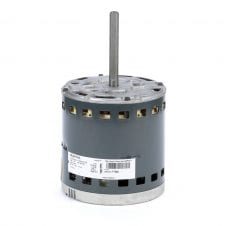 Innovation: Genteq® Ensite® motor, an electronically commutated motor specifically designed for furnace application, enables customers to comply with the U.S. Department of Energy’s (DOE) Fan Energy Rating (FER) regulatory requirements taking effect in July of 2019. The Genteq® Ensite® motor is a cost-efficient solution to achieving compliance without compromising on premium features such as advanced Blak Box™ and Near Field Communication (NFC) capabilities that support Internet of Things (IoT) and preventive maintenance.
Innovation: Genteq® Ensite® motor, an electronically commutated motor specifically designed for furnace application, enables customers to comply with the U.S. Department of Energy’s (DOE) Fan Energy Rating (FER) regulatory requirements taking effect in July of 2019. The Genteq® Ensite® motor is a cost-efficient solution to achieving compliance without compromising on premium features such as advanced Blak Box™ and Near Field Communication (NFC) capabilities that support Internet of Things (IoT) and preventive maintenance.
Finalists in this category include: ArctiChill (SuperMod variable speed modular chiller platform); Des Champs Technologies (Model Air-Trap™ IPN); and Emerson (Universal single-stage furnace control for ECMx blower motor).
INDOOR AIR QUALITY
Winner: CPS Products, Inc. (Booth B3553)
Innovation: IAQ SmartAir™ is a smart tool used for identifying, diagnosing and solving IAQ issues. This tool is designed to diagnose more accurate true read indoor air quality issues, improve sales and enhance overall IAQ professional expertise. Its design walks professionals through the measuring process and provides a compiled list of IAQ issues and potential solutions based on collected and analyzed data. The IAQ SmartAir™ connects to the internet via WiFi for remote monitoring and evaluation, and allows professionals to create on-site customer reports and job quotations.
Finalists in this category include: Fresh-Aire UV (Mini UV DST-LED disinfection system for mini-split A/C systems); and Nortec [Condair] (DRAABE TrePur humidifier and evaporative cooler).
PLUMBING
Winner: Anvil International (Booth C6625)
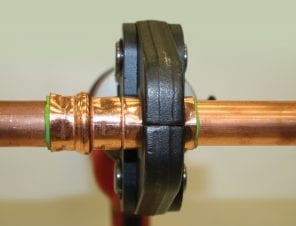 Innovation: AnvilPress™ Copper, Copper Press Fittings and Coupling Systems are designed with patented Visual Indicator technology that provides 200 percent more sealing surface than typical fittings for leak prevention. The system is built with a double-fold sealing characteristic and a replaceable O-ring seal design that supports superior pressure and tensile performance. Its Virtual Indicator and Burr-Stop membrane solve the top two causes of leaks: improperly pressed fittings and burrs on the tube that damage the O-ring during installation.
Innovation: AnvilPress™ Copper, Copper Press Fittings and Coupling Systems are designed with patented Visual Indicator technology that provides 200 percent more sealing surface than typical fittings for leak prevention. The system is built with a double-fold sealing characteristic and a replaceable O-ring seal design that supports superior pressure and tensile performance. Its Virtual Indicator and Burr-Stop membrane solve the top two causes of leaks: improperly pressed fittings and burrs on the tube that damage the O-ring during installation.
Finalists in this category include: Caleffi Hydronic Solutions (ThermoSetter™ thermal balancing valve); Emerson (RIDGID Press Booster & rings for MegaPress® XL); and Noritz America (Noritz Residential Combination Boiler).
REFRIGERATION
Winner: Emerson (Booth B2219)
Innovation: Copeland Scroll™ fractional-horsepower, low-temperature compressors use liquid injection technology and cooling discharge temperatures to reduce compressor stress and meet federal regulatory requirements. With offerings ranging from ¾ to 1 ½, OEMs can combine certain compliance efforts into a single design cycle for smaller low-tomedium temperature applications that deliver high efficiency with reliable performance. The Copeland Scroll™ is wide-ranged and multi-refrigerant capable with low sound and vibration. It is an ideal solution for supermarkets, restaurants and convenience store operations.
Finalists in this category include: Baltimore Aircoil Company (TrilliumSeries™ adiabatic condenser); and DunAn Microstaq, Inc. (Silicon Refrigeration Valve).
SOFTWARE
Winner: Taco Comfort Solutions (Booth B2239)
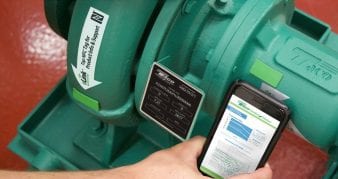 Innovation: Taco Tags featuring eLink™ is a cloud-based support program that provides users with a web-based, factory-maintained knowledge base on their mobile device via NFC technology. The Taco Tag is an IC chip and antenna wrapped in silicone designed to offer durability under the most extreme conditions of heat and weather. It works using power from a user’s devices, eliminating the need for wires or external batteries. Each tag provides direct access to customer support, along with all vital information specific to each product, and is connected to the eLink cloud-based service system where users can store and access order information, product specifications, instruction sheets, suggested replacement parts, CAD files, technical support, catalogs, local sales representative information and project management.
Innovation: Taco Tags featuring eLink™ is a cloud-based support program that provides users with a web-based, factory-maintained knowledge base on their mobile device via NFC technology. The Taco Tag is an IC chip and antenna wrapped in silicone designed to offer durability under the most extreme conditions of heat and weather. It works using power from a user’s devices, eliminating the need for wires or external batteries. Each tag provides direct access to customer support, along with all vital information specific to each product, and is connected to the eLink cloud-based service system where users can store and access order information, product specifications, instruction sheets, suggested replacement parts, CAD files, technical support, catalogs, local sales representative information and project management.
Finalists in this category include: BreezoMeter Ltd. (Air quality and pollen data API); and Emerson (Sensi™ Multiple Thermostat Manager).
TOOLS & INSTRUMENTS
Winner: Dwyer Instruments, Inc. (Booth C5407)
Innovation: The Wireless Hydronic Balancing Kit, Series 490W, is a manometer designed to provide accurate and easy operation for HVAC professionals. The kit measures the pressure drop across HVAC balancing valves by using wireless sensors, a versatile handheld and Bluetooth® communication. Users can select valves for measurement from a predetermined list or through manual input of CV values. The handheld monitor allows for the flow of up to three valves at a time, with a single operator to monitor and balance a hydronic system in less time compared to traditional methods.
Finalists in this category include: Marketair, Inc. (Easybend); and Ritchie Engineering Co., Inc. (YELLOW JACKET P51-870 TITAN Digital Manifold).
VENTILATION
Winner: Energy Wall, LLC (Booth B268)
Innovation: The Energy Wall Universal ERV (U-ERV) is an energy recovery ventilator that is three times smaller and lighter than current technologies available on the market. It weighs only 90 pounds, allowing for easy installation of the fully-functional, independent system. A small footprint allows the modules to be hand-carried and assembled on site, where they operate with a single duct connection and point-of-power and control. This provides extreme redundancy for mission-critical facilities. It is also compliant with UL 900 fire/smoke standards and operates in all six orientations.
Finalists in this category include: Continental Fan Manufacturing Inc. (TEK-MAX plug fan); LG Electronics USA, Inc. (LG AHU conversion kit); and Triatek (EcoAir Valve™).
For more information regarding the AHR Expo Innovation Awards, visit the awards section on the AHR Expo website.
The AHR Expo provides a unique forum for industry professionals to meet under one roof to share ideas, discover new products and technologies and find solutions to the industry’s technical problems. To register, visit the AHR registration website.
For more information about the 2019 AHR Expo or the Innovation Awards Competition, please visit ahrexpo.com. Specific questions regarding 2020 Innovation Awards and entry processes can be emailed to kpires@iecshows.com.
